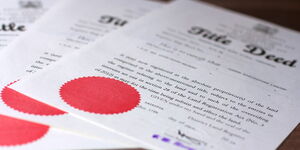We all know that hitting your funny bone, which is located at your elbow, on a table edge or on a doorframe isn't that funny.
Once hit, a sharp and disorienting pain accompanied by a tingling or numbing sensation runs through your arm. But many ask, what really happens inside your arm that causes such a strong reaction?
It is not clear where the name "funny bone" originated from; however, some theories suggest that it originated from the resemblance of the name of the upper arm bone, the "humerus," and the word "humorous," which is a word used to describe something funny.
On the other hand, some suggest that the name was sourced from the odd sensation you get when this bone is struck.
The funny bone is located in the elbow, specifically along the groove on the inner side of the elbow; however, what you hit is not a bone, it is a nerve known as the ulnar nerve, one of the major nerves in your arms.
The ulnar nerve, which is also known as your funny bone nerve, is one of the five nerves that are intertwined in an area of your neck and shoulder. The nerve travels along your elbow and down your forearm, through your neck and upper spine, all the way down to your hand.
This nerve is actually the one responsible for activating muscles in your forearms, wrists, and hands by carrying signals from the brain and helps your hand perform small tasks such as writing with a pen or pencil, sewing, tying shoelaces, and fastening buttons, among others.
The ulnar nerve runs from your shoulder into your hand, where it is mostly protected by bones and muscles; however, as the nerve passes the elbow, it is only protected by skin and fat, making it vulnerable to bumps.
Injuring this nerve can lead to a variety of neurological and muscular symptoms, ranging from mild, such as the sharp pain you experience for a while when you hit it on a doorframe, to severe, which include weakness and muscle wasting, sensory disturbances, and chronic nerve damage, depending on the extent and location of the injury.
In most cases, these Injuries, which are caused by continuous pressure on the nerve, a broken elbow, direct injury to the nerve, an illness that affects the nerve such as diabetes, and pressure on the nerve or a nearby area that could cause the nerve to shift the nerve, usually affect athletes and people who perform repetitive motions with their hands, wrists, and forearms.
Some of the signs and symptoms of an ulnar nerve injury include the ring and pinky fingers not extending fully, weakness in the hand, tingling or loss of feeling in the ring and pinky fingers, Elbow pain, Wrist pain, and numbness in the elbow or wrist.
People are advised to seek immediate medical attention, take general rest, avoid repeated pressure, stretch muscles, and limit exposure to activities that could cause direct injury to the elbows and wrists to avoid and manage ulnar nerve injury.












